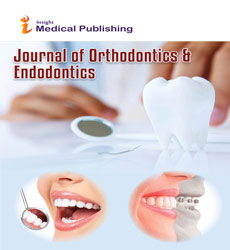Abstract
Studying the Prevalence and Etiology of Class II Subdivision Malocclusion Utilizing Cone- Beam Computed Tomography
Objective: The purpose of this study was to investigate the prevalence of subdivision malocclusions in Class II/1 and Class II/2 patients and to see if the II/2 group had greater skeletal asymmetry.
Materials and methods: From a sample of over 1500 records, 256 Class II malocclusions met inclusion criteria. Of these, 214 were Class II/1 and 42 were Class II/2. Seven landmarks identified on CBCT scans were used to make 8 bilateral linear measurements. Right and left side differences were calculated for each subject, and median values were compared. Linear measurements from the Class I side of the subdivision malocclusion to the Class II side were compared.
Results: 22.9% of II/1 subjects had a subdivision malocclusion versus 50% of the II/2. Significant side-to-side differences existed between II/1 and II/2 subjects in two of eight measures. There were greater differences in the II/2 group between the Class I side of subjects to the Class II side than in the II/1 group.
Conclusion: All mandibular variables indicated greater degrees of mandibular asymmetry in the II/2 group; only Co-Po proved statistically significant.
Author(s):
William M Anderson, Curtis M Marsh, Neil C Kessel and William J Dunn
Abstract | Full-Text | PDF
Share this

Google scholar citation report
Citations : 265
Journal of Orthodontics & Endodontics received 265 citations as per google scholar report
Abstracted/Indexed in
- Google Scholar
- China National Knowledge Infrastructure (CNKI)
- Cosmos IF
- Directory of Research Journal Indexing (DRJI)
- WorldCat
- Geneva Foundation for Medical Education and Research
- Secret Search Engine Labs
- Euro Pub
Open Access Journals
- Aquaculture & Veterinary Science
- Chemistry & Chemical Sciences
- Clinical Sciences
- Engineering
- General Science
- Genetics & Molecular Biology
- Health Care & Nursing
- Immunology & Microbiology
- Materials Science
- Mathematics & Physics
- Medical Sciences
- Neurology & Psychiatry
- Oncology & Cancer Science
- Pharmaceutical Sciences

